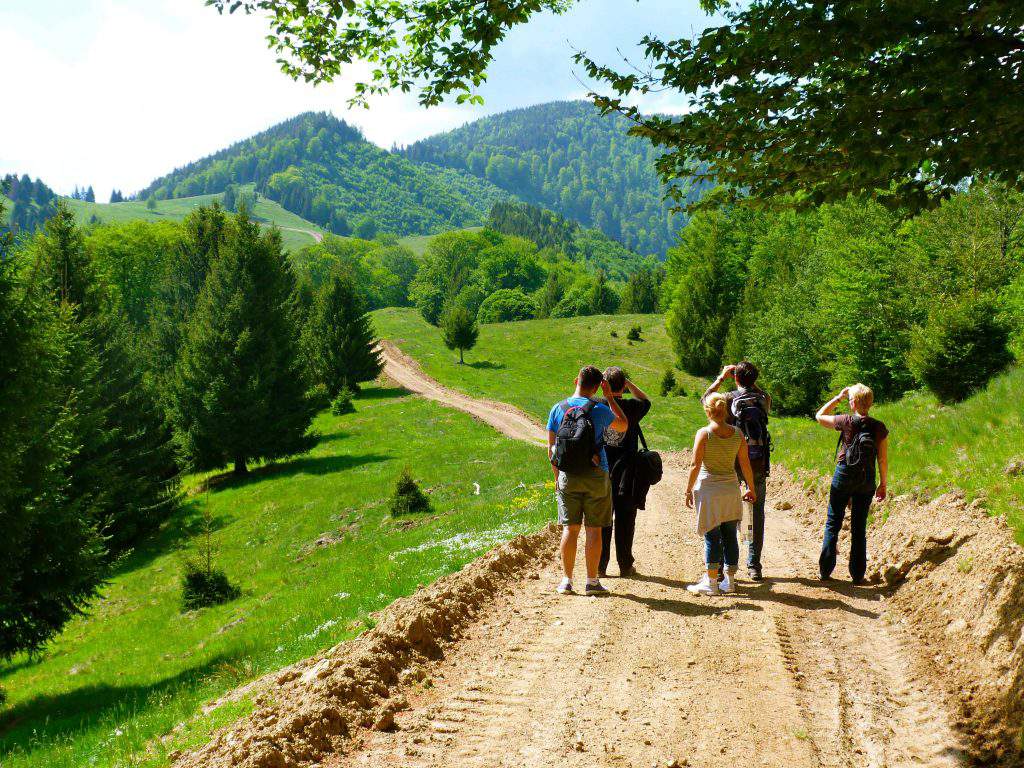Szekler Safari – Bears within arm’s reach

According to Tropical Magazine, in nearly all Székely jokes, or even on the most popular Romanian beer, we come across one of the country’s symbols, the Ursus arctos, or the brown bear. In our country, who doesn’t like the gentle, trudging animal, bearing absolutely no resemblance to Winnie the Pooh? On the other side of our Eastern border, especially in Szeklerland, however, their proliferation poses a serious problem.
The brown bear is Europe’s largest predator, with male specimens sometimes reaching a weight of 350 kilograms. According to the estimates of the year 2017, around 6800 bears inhabit Romania, the overwhelming majority of the bear population, approximately 5300 specimens, can be found in the counties of Hargita (Harghita), Kovászna (Covasna), Maros (Mures) or the neighboring one of Brassó (Brasov), all of which are part of Szeklerland (in Hungarian: Székelyföld). This is where they pose the greatest threat, too. Only last year 18 people were attacked by bears, and this year a dozen attacks have already been reported. The latest attack took place at the community college of Bálványos, where a 27-year-old man from Gyimes was bitten by a smaller specimen on the zeroth day of the schoolyear; fortunately, the young man was able to get off with but a few wounds from the frightening experience.

Of course, not everyone feels threatened by the large predators; some actually wish to observe their lifestyle from as close up as possible. Fortunately for them, the bear population of Székely Land has reached a decades-long high. And fear not! There is no need to spend several days in the forest to stumble upon well-developed specimens, as there are several companies who organize safe and comfortable bear sightings.
For lots of people, upon hearing the word ‘bear sighting’, their thoughts immediately go to a lash-up wooden construction, where one has to wait for hours, in the rain and in the freezing cold, while bugs bite them to death. In reality, however, there are so-called bear-watching stations.

These are sealed wooden houses which are suitable for longer stays, equipped with toilets, electricity, heating, HVAC, and beds. Their enormous windows are covered by a one-way mirror, which enables them to observe the bears in their natural habitat without the animals being aware of human presence. It is a bit like watching a movie on an enormous silver screen. Most places provide the customers with a guide as well, whose job is to explain what exactly they are seeing, and tells interesting stories about the way bears live and their habits. This can make bear-watching interesting – and of course, safe – for children as well. Some ambuscades await nature photographers in particular, who are thus enabled to be near nature for days at an end. Moreover, they host photography circles at night.
And what are we to expect if we sign up for such an experience? First of all, it’s recommended to wear warm and comfortable clothes.
Degrees in Hargita can drop below 10 degrees Celsius even during the summers, and most bear ambuscades can only be accessed on foot or by jeeps. We can be sure, however, that we will be forced to trudge in mud at some point.
Even the youngest know that come the winter, bears hibernate, but this hibernation isn’t the same as for reptiles. Bears often wake up in search for food even after the snow has fallen. Therefore, theoretically, one can observe them year-round, but in order to make sure, it is recommended to visit one of the ambuscades during the spring or the summer. Tours usually begin at noon, as it is best to arrive 2 or 3 hours before twilight at the wooden houses. Ambuscades are usually constructed on clearings that are regularly frequented by the bears, and they attract them there with food.

This way, success is practically guaranteed. If we are lucky, we can meet even a dozen of bears in a couple of hours, or see them as they fight for the right to the land or for the right to mate. Of course, how close bears come to the windows depends on us, too. As their hearing is particularly acute, they can be scared off by barely audible conversations or the slightest of noise, and the flash of a camera is guaranteed to make them run off. It is also recommended to come without having applied strong perfume, as the bear may thus ‘smell something fishy’ and easily tell that something is not right. Attacks, however, need not be feared.
Going to an ambuscade – without the intention to hunt – is more of a fatherly than a manly challenge; nevertheless, it can make for the experience of a lifetime.
And if you don’t feel safe even behind the glass, or simply don’t want to huddle yourself up on uncomfortable chairs for hours, you can make yourself a cup of coffee, get cozy in your favorite armchair, and follow the happenings inside the forest through the online broadcast of one of the webcams stationed there. Time for bear-watching!
[button link=”https://dailynewshungary.com/bear-farm-veresegyhaza/” color=”green” newwindow=”yes”] WE INTRODUCE YOU: THE BEAR FARM IN VERESEGYHÁZA, HUNGARY – PHOTO GALLERY[/button]
As we wrote before about the curious case of Vackor, a recently spotted bear in Hungary. Vackor (‘wild-pear’ in English) is a bear who appeared in the town of Abony, close to Szolnok. It looked around some houses, then said hello to the local primary school leaving the area through the schoolyard, read more HERE.
Source: Zoltán SIPOSHEGYI, Journalist specialized in foreign politics – Tropical Magazin





